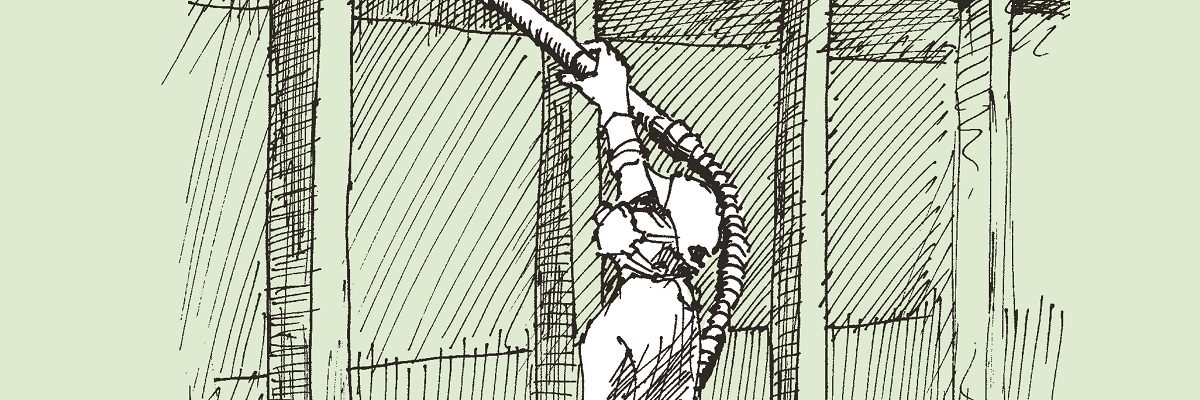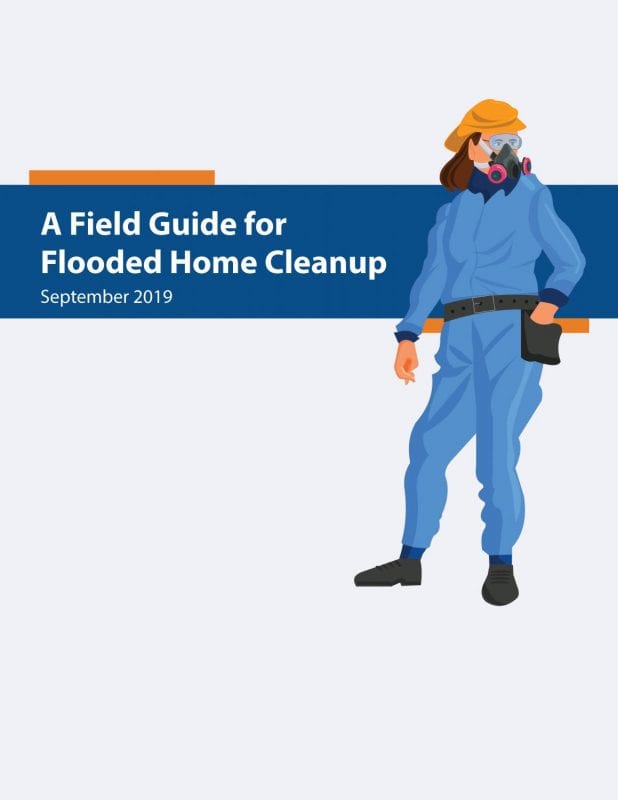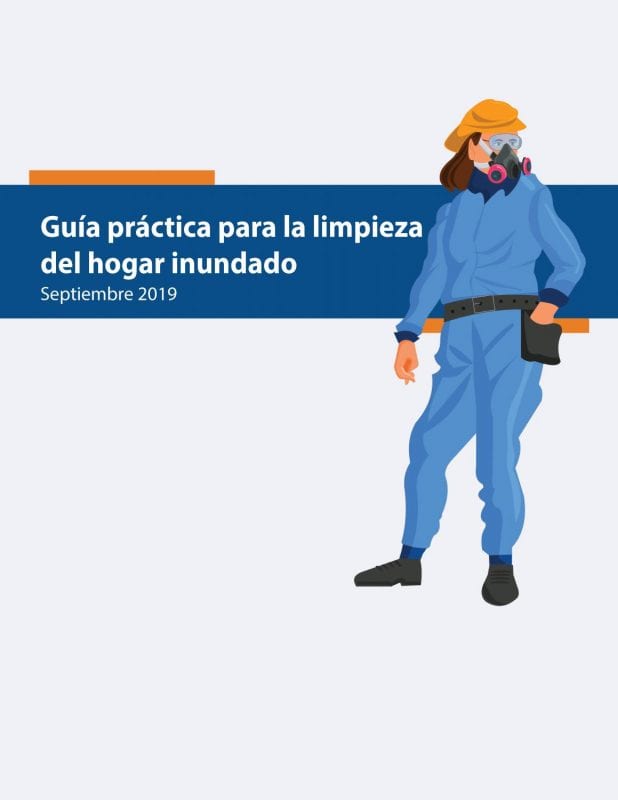Guide Available to Help Homeowners Combat Mold Due to Flooding: Free Booklets for Affected Midwestern Areas
(Columbia, MD, June 25, 2008) – A guide developed to help homeowners and contractors safely clean up homes damaged in the recent floods along the Mississippi River is available immediately. Creating a Healthy Home: A Field Guide for Clean-Up of Flooded Homes is a do-it-yourself booklet that provides easy step-by-step instructions on how to handle mold removal in flooded homes before starting to rebuild or renovate. The guide is currently accessible online at http://www.centerforhealthyhousing.org/FloodCleanupGuide_screen_.pdf [link inactive; see update]. Agencies working directly with individuals impacted by the floods can also receive a free shipment of printed booklets to distribute to those needing assistance. Please call the National Center for Healthy Housing (NCHH) at 877.312.3046 for more information.
Weeks of heavy rains have brought flooding problems to communities all along the Mississippi River, from Iowa to Missouri. Officials in Cedar Rapids, Iowa, are calling it the worst storm in 15 years. Many homes have already endured extensive damage and required evacuation, and in many places the water is still on the rise.
“Removing standing water and water damaged materials within the first 48 hours is critical for preventing mold growth,” said Rebecca Morley, executive director of NCHH, based in Columbia, Maryland. “Mold exposure may cause allergic reactions, such as asthma attacks, sneezing, runny nose, red eyes and skin rash. Even dead mold spores pose a risk, especially for children and adults with respiratory problems,” said Morley.
In 2005, NCHH researched and wrote the guide with funding and technical support from Enterprise Community Partners, a leading national community development organization. The instructional guide documents a protocol that was tested on four homes in New Orleans following hurricanes Katrina and Rita. In a home that experienced at least five feet of standing water for at least two weeks and had mold growth up to the ceiling, the protocol reduced the mold to nondetectable levels.
NCHH recommends the following steps for cleaning up flooded homes:
- Remove standing water and dry out the building as soon as you can. Open doors and windows. Mop up or pump out any standing water.
- Use a mild detergent and water to clean and remove mold from hard surfaces.
- Use fans and dehumidifiers to remove moisture after cleaning. Be careful not to blow mold around while drying—point fans to blow outside.
- Throw away moldy things that cannot be cleaned such as carpets and carpet padding, upholstered furniture, drywall, wood molding, fiberglass or cellulose insulation, and ceiling tiles.
- If there is more than 10 square feet (about 3 feet by 3 feet) of mold in your house, consider using a professional mold cleanup contractor. Do not hire a contractor who recommends fogging or spraying as a way to clean up mold. Moldy materials must be removed from the building.
- Wipe dry or allow all surfaces to fully air dry before doing any more work. Make sure that the home is allowed to completely dry before beginning restoration.
- Additionally, to prevent carbon monoxide poisoning, residents are reminded not to operate generators within buildings. In the case of power outages, generators should only be operated outside of an enclosed space.
National housing organizations Enterprise Community Partners, NCHH, and NeighborWorks America® partnered with NeighborWorks Organization and Neighborhood Housing Services of New Orleans to develop the clean-up protocols. Columbia University and Tulane University provided expertise for the demonstration project. The guide is being reprinted for distribution across the affected Midwestern states through the generous support of the Home Depot Foundation.
###
The National Center for Healthy Housing (NCHH) is the only national scientific and technical nonprofit organization dedicated to creating healthy and safe homes for America’s children through practical and proven steps. NCHH develops scientifically valid and practical strategies to make homes safe from hazards, to alert low-income families about housing-related health risks, and to help them protect their children. NCHH also works with governmental and nongovernmental organizations to develop standards and programs and guide their implementation through insurers, lenders, federal and state laws and regulations, community organizations, and the courts.
Updates
Creating a Healthy Home: A Field Guide for Clean-Up of Flooded Homes was revised in 2019 and republished as A Field Guide for Flooded Home Cleanup in English and as Guía Práctica para la Limpieza del Hogar Inundado in Spanish.
Learn about the new project and a related e-learning course here.
Because the current edition of the guide is only available as a PDF download, the offer of shipped copies for distribution in flooded communities is no longer available.
Rebecca Morley left NCHH in December 2014. A listing of NCHH’s current staff is available here.


